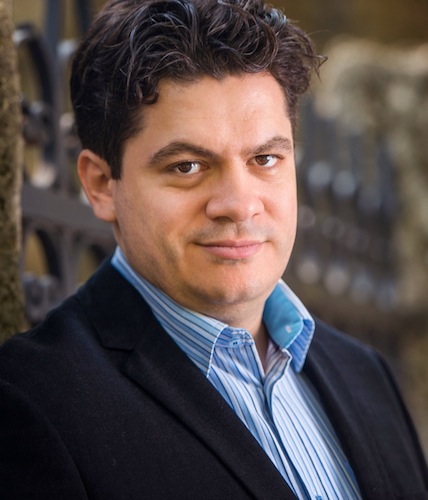NSO revives rare Copland symphony in American program

Cristian Macelaru conducted the National Symphony Orchesta Thursday night. Photo: Sorin Popa
It was this past April when Cristian Măcelaru last stood in front of the National Symphony Orchestra. The Romanian-born conductor, who took over the leadership of the Cabrillo Festival of Contemporary Music this summer, has become a regular with the NSO in recent years. He was back in the Kennedy Center Concert Hall on Thursday night to lead a program of American music for the first subscription concert of the season.
Yet Măcelaru’s interpretation of this homegrown program largely disappointed. His rendition of Short Ride in a Fast Machine by John Adams, a perennial concert opener since its premiere in 1986, did not have the same pep and crispness that Marin Alsop, Măcelaru’s predecessor at Cabrillo, put across with the helped create with the Baltimore Symphony Orchestra two weeks ago. The cross-rhythms failed to lock together as tightly, and the textures, left largely unvaried, left many details covered, as in the horns.
The rest of the program consisted largely of American favorites, yet the evening’s greatest pleasure was heard with Aaron Copland’s early Symphony for Organ and Orchestra, heard only once in NSO history, back in 1987. Copland composed the work in 1924 for the Boston Symphony Orchestra, conductor Serge Koussevitzsky, and his teacher in Paris, Nadia Boulanger, who made her American debut in the solo part.

Cameron Carpenter
Cameron Carpenter took the console of the Rubenstein Family Organ, inaugurated in the Concert Hall in 2012, but he often seemed impatient with the piece’s slow unfolding. His organ registrations in the first movement seemed out of place in the chamber scale of much of the orchestral writing, which opens memorably with solo viola and flute. Carpenter tended to cut detached notes short in a mannered way, while the orchestra-only sections had a smoother, more undulating quality under Măcelaru.
Assistant principal oboist Jamie Roberts excelled on the perky oboe solos in the second movement, a bubbly scherzo. Again Carpenter did not allow much flexibility in the rhythmic pacing, so that the allusions to the folk song “Au clair de la lune,” likely a tribute to Boulanger, did not hang in the air as they should. Here, though, Carpenter outdid himself in the choice of registrations, finding some truly unexpected bleats and burbles in the final section.
Likewise, Carpenter’s management of the organ’s loud potential powered a thundering crescendo of sound in the third movement, which featured a pounding march theme worthy of Shostakovich. The polite applause was not sustained long enough to coax an encore from Carpenter, who is much more outgoing as a solo performer.
In Copland’s Suite from Appalachian Spring, Măcelaru’s reading of the score was best in the misty slow sections like the opening, which plumbed the right, sweetly elegiac note. His tempo choices in the faster movements tended to make the smallest notes blend together, and the musicians seemed to resist the pacing in some places.
In spite of its peaceful ending, it may have made more sense to end the concert with the Suite, rather than with Leonard Bernstein’s Divertimento. Also heard only once previously from the NSO, in 1983, it is a largely derivative suite of miniatures. Bernstein composed the work in 1980, for the 100th anniversary of the Boston Symphony Orchestra, where Bernstein got his start as assistant conductor to Koussevitzky.
The opening “Sennets and Tuckets” movement, in which Bernstein borrows obliquely from himself, was punchy, but the 7/8 waltz could have been more lush and warm. The high points were the evocations of other styles — Bernstein was a particularly skilled mimic, and the piece is “a study in pastiche,” in the words of Kenneth LaFave — like the goofy “Turkey Trot” and “Samba.” Principal oboist Nicholas Stovall played elegantly in the outright quotation of the oboe solo from the first movement of Beethoven’s Fifth Symphony in the “Mazurka.”
The musicians gave looming menace to the 12-tone row of the “Sphinxes” movement, a reference to the enigmatic movement of that title in Schumann’s Carnaval, often left unplayed. Ingeniously Bernstein weaves that movement into the “Blues” that follows it, evoking nothing more than a 1950s burlesque act. On this occasion it served as as unplanned yet serendipitous tribute to Hugh Hefner, who had died the night before.
The program will be repeated 8 p.m. Saturday. kennedy-center.org; 202-467-4600.


